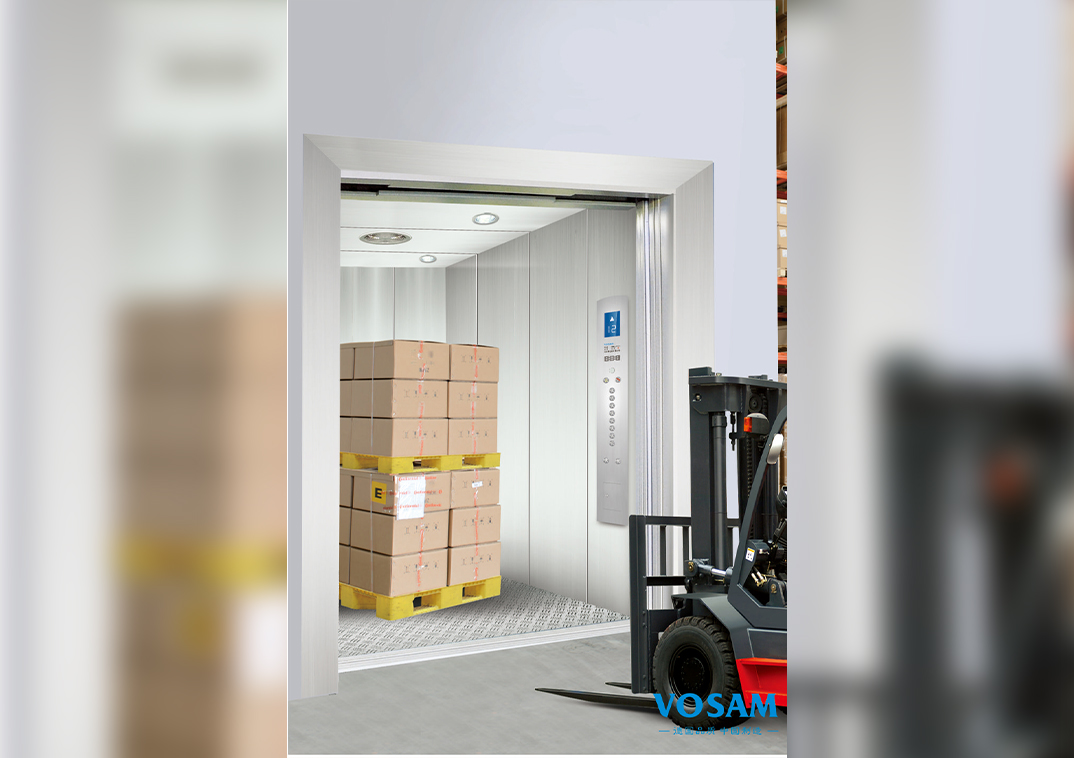When setting the speed of freight elevators based on the number of building floors and cargo transportation efficiency requirements, the following factors need to be considered comprehensively:
The number of floors in a building directly affects the running time and efficiency of the freight elevator. The elevator speed is closely related to the number of floors:
For low-rise buildings, the speed of the freight elevator can be appropriately slow. Generally, an elevator speed of 0.5 meters to 1 meter per minute is sufficient. Because the running distance of low-rise buildings is short and the elevator running time is relatively short, the speed requirement does not need to be too high.
For mid-rise buildings, elevators can operate at slightly higher speeds, usually between 1 meter and 1.5 meters per minute. As the number of floors increases, the running time of the elevator becomes longer. Appropriately increasing the elevator speed will help improve transportation efficiency and reduce waiting time for goods.
High-rise buildings require higher elevator speeds to ensure shorter transit times. Generally speaking, an elevator speed of 1.5 meters to 2 meters per minute is more suitable. In high-rise buildings, elevators run longer distances. Increasing the speed can significantly reduce the waiting time for goods in the elevator and improve overall work efficiency.
Cargo transportation efficiency is a key consideration when setting the elevator speed. The appropriate speed should be selected based on the actual situation:
If there are more bulk goods to be moved, a higher elevator speed may be needed to complete the transportation task quickly. For light items, the speed can be slightly slowed down to avoid damage to the goods due to too fast elevator movement.
If the frequency of cargo transportation is high and frequent operations up and down floors are required, the elevator speed should be set higher to improve transportation efficiency and shorten the time required for a single transportation. For frequently used freight elevators, you can choose a higher operating speed, or even consider using multiple elevators to increase transportation capacity.
The speed of the elevator should also consider its carrying capacity and usage environment. For example, when the elevator load is large, excessive speed may affect the stability and operating life of the elevator. Therefore, it is necessary to select an appropriate speed and load capacity to ensure the normal operation of the elevator.
Freight elevators are different from passenger elevators in that there are usually no passengers on them. However, if there are occasional staff operations or fragile items need to be transported, the speed of the elevator still needs to consider stability and safety.

Excessive speed may cause vibrations to the cargo and even cause the cargo to tilt or fall, especially some heavy cargo or special items. Therefore, when setting the speed, the elevator's braking system and the safe transportation of goods should be taken into consideration to ensure that the speed does not affect the stability of the goods.
Freight elevators in high-rise buildings should be equipped with a good buffer system when setting a higher speed to reduce the impact when reaching the target floor and ensure the safety of the goods.
The purpose of the building also determines the choice of elevator speed. For example, industrial warehouses and commercial buildings will have different speed requirements for freight elevators:
These locations often require high-frequency transportation of goods up and down, and may require long transportation distances. At this time, the speed of the freight elevator should be higher to ensure handling efficiency and reduce downtime waiting time. The generally recommended speed is 1.5 meters to 2 meters per minute.
Freight elevators in commercial buildings usually do not require frequent operation, and the goods transported are mostly office equipment or small quantities of goods. In such an environment, the elevator speed can be appropriately reduced to ensure the smoothness of cargo transportation. The speed is generally set at around 1 meter per minute.
Energy saving is also a factor that cannot be ignored when setting the speed of a freight elevator. The elevator drive system (such as traction drive, hydraulic drive) should be selected according to the actual situation to ensure maximum energy efficiency. Excessively high speed will increase energy consumption, so on the premise of meeting transportation needs, try to choose a suitable elevator speed to reduce energy waste.
Freight elevator speed also affects equipment wear and frequency of maintenance. When the speed is too fast, the wear of elevator components will be greater, which may increase the frequency of repair and replacement of components. Therefore, the selection of elevator speed should take into account long-term maintenance costs and the service life of the equipment. Generally speaking, maintaining a moderate speed can extend the service life of the elevator.
Many elevator manufacturers and designers will provide specific speed selection suggestions based on past experience and case data. For example, the speed of a freight elevator may have been optimized and verified in other buildings under similar conditions. You can refer to this empirical data and make the most appropriate choice based on the actual needs of the building.
When setting the speed of a freight elevator based on the number of building floors and cargo transportation efficiency requirements, it is key to consider the number of building floors, cargo type, transportation frequency, and the safety and energy-saving needs of the elevator. Typically, low-rise buildings have slower elevator speeds, mid-rise buildings have moderate elevator speeds, and high-rise buildings require faster speeds for efficiency. When selecting the elevator speed, it is also necessary to balance safety, stability and maintenance costs to ensure the long-term stable operation of the elevator.











